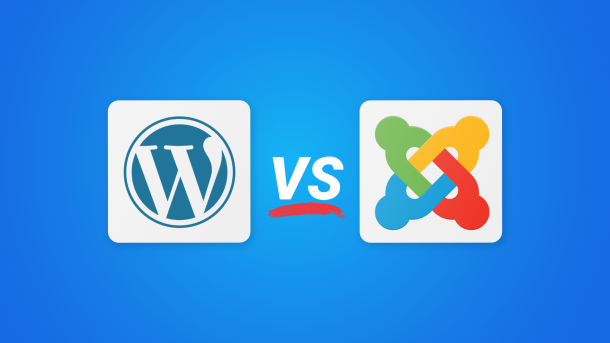So you’ve finally decided it’s time. Time to launch that passion project you’ve been dreaming about. Time to start that side hustle or expand your current business into a digital platform. Whether it’s a product catalog, membership site, digital download store, or an online course library—you’re ready to build something real.
And because you’re a tech-savvy DIYer—the kind of person who enjoys figuring things out and getting your hands into the tools—you’re leaning toward open-source platforms like WordPress, Joomla, or Moodle. You’ve heard great things. You’ve watched tutorials. Maybe you’ve even tinkered around with a few of them.
But before your vision becomes a reality, there’s a critical decision that stands between you and your launch:
Choosing the right hosting service.
It’s not just a technical choice—it’s an investment of your time, your budget, and your energy. Pick the wrong one, and you’ll hit frustrating roadblocks, performance issues, and unexpected limits. Pick the right one, and you'll have a stable foundation to grow on for years to come.
In this article, I’ll walk you through the best hosting options for tech-savvy DIY creators who want to build with open-source tools. I’ll break down the options you need, the ones you should avoid, and challenge a few popular assumptions along the way.
Meet the Tech-Savvy DIYer: Is This You?
Before we dive into hosting plans, let’s check if this guide is really for you.
You're probably a tech-savvy DIYer if:
-
You’re comfortable navigating computers, software, and digital tools without much handholding.
-
You’re a self-taught learner who regularly digs into forums, YouTube tutorials, and documentation.
-
You can troubleshoot basic issues and aren’t intimidated by error messages.
-
You’ve installed or configured software before (on your computer or even a server).
-
You’re not a developer—but you’re not afraid of code either. You might copy and paste snippets, adjust config files, or lightly tweak CSS.
-
You’re curious about new tools and like to test them if they serve a clear purpose.
-
You’re willing to put in effort to learn, especially when it means building something meaningful.
-
And most importantly—you’ve got big dreams and want to create something that lasts.
If this sounds like you—or who you want to become—then you’re in the right place. The hosting recommendations below are tailored for people just like you.
Hosting Types: What You Need to Know
There are two broad categories of hosting:
1. Managed Hosting
This is where the hosting provider takes care of the server setup, security, maintenance, and support. It’s like renting a fully serviced apartment—everything's ready to go, and someone else handles the plumbing.
2. Unmanaged Hosting
Here, you get full control over your server—but you’re on your own. You install the operating system, set up Apache or Nginx, configure security, and handle all maintenance. Powerful, yes—but this is beyond the scope of most DIY creators unless you’re already deep into DevOps.
For this article, we’re focusing entirely on managed hosting, where you’ll spend less time fixing issues and more time building your platform.
Hosting Types, Explained with a Moving Truck Analogy
Think of choosing a hosting plan like renting a moving truck:
-
Shared Hosting is like a compact van. Cheap, limited space, and you’re sharing it with others.
-
Virtual Private Server (VPS) is a mid-size truck. More control, more space, more power.
-
Cloud Hosting is the 18-wheeler. Scalable, distributed, and built for big or growing needs.
Let’s break each one down by capability:
| Feature | Shared Hosting | VPS Hosting | Cloud Hosting |
|---|---|---|---|
| Monthly Traffic | Up to 25,000 visits | 25,000–100,000 | 100,000+ |
| Websites Supported | 1–5 small sites | 5–20+ sites | 20+ apps & services |
| Storage | 10–50 GB (HDD) | 50–200 GB (SSD) | 100 GB to multiple TB |
| Bandwidth | ~500 GB | 1–5 TB | 5+ TB or autoscaling |
| Database Load | Light | Moderate to Heavy | High/complex DB structures |
| Performance | Shared resources | Dedicated RAM & CPU | Load-balanced & autoscaling |
| Customization | Very limited | Full root access | Root + multi-service configs |
| Scaling | Very limited | Manual upgrade | Auto-scaling on demand |
Shared Hosting: For Beginners, Not Builders
If you're building a quick portfolio or hobby blog, shared hosting might seem attractive. But if you're working with serious open-source tools like Moodle, Joomla, or WordPress with lots of plugins, you'll hit limitations fast.
-
Performance is inconsistent due to resource sharing.
-
Customization is extremely limited.
-
It’s a “black box”—you don’t know exactly what you're getting.
Verdict: Use only if you're testing ideas. Avoid for serious projects.
VPS Hosting: The Sweet Spot for DIY Builders
A Virtual Private Server (VPS) gives you your own slice of a server with dedicated CPU and RAM. You get full control without the burden of maintaining physical hardware or an entire server stack.
-
Great performance for the cost.
-
Full control over configuration.
-
Easily scalable with a simple support request.
Ideal for: Running multiple open-source apps, mid-sized membership sites, online course platforms, and projects with growing traffic.
Cloud Hosting: For Big Dreams and Growing Demands
Cloud hosting uses a distributed network of servers instead of a single machine. That means high availability, auto-scaling, and serious performance.
-
Perfect for mission-critical apps with variable traffic.
-
Allows for complex, multi-service deployments.
-
Scales automatically when traffic spikes.
Use cloud hosting if you're launching a high-growth platform, working on a multi-user LMS, or running global services.
A Word on App Hosting (And Why You Should Avoid It)
Some providers offer “app-specific hosting” like WordPress-only hosting. It sounds convenient—but it's extremely limited.
You only get access to one app, with little room for customization or growth. If you're only building a personal blog, this might work—but in that case, just use Wix or Squarespace. It’s easier.
For creators who want power and flexibility, app hosting is a dead-end.
Bonus Considerations
-
Compare VPS vs Cloud Carefully: There’s a lot of overlap. A low-end cloud plan may offer less than a high-end VPS. Look at CPU, RAM, and scaling features, not just the label.
-
Shared Hosting Is Opaque: They don’t disclose actual performance specs, so you’re buying blind. Reputation matters a lot here.
-
Start Where You Are: You can always upgrade later. Choose based on your current goals, and build from there.
Final Thoughts
As a professional VFX artist and former global director of training and development, I’ve used open-source tools to build everything from personal tutorial platforms to enterprise compliance training systems. The hosting decision is the backbone of all of it.
If you want to build something that lasts—something that grows with you—then choose a hosting service that fits your technical skill, your project scope, and your future ambitions.
And if you're ready to go deeper, OpenAppGuide.com breaks down 12 project types—each with its own roadmap, tools, and training—so you can build with clarity, confidence, and support.
Let’s build something that lasts.






